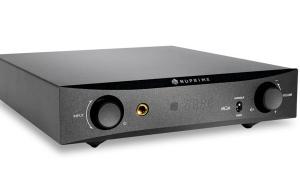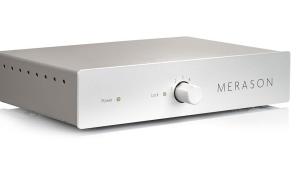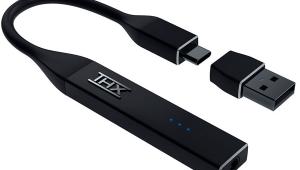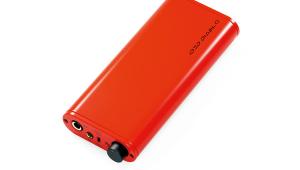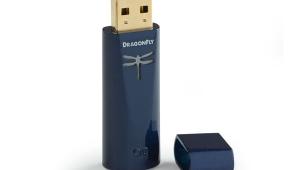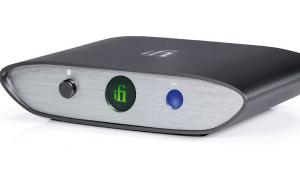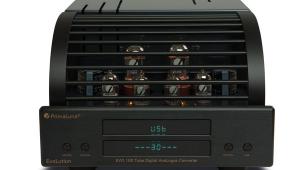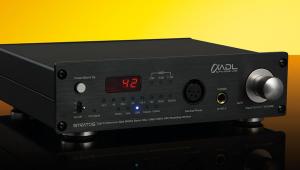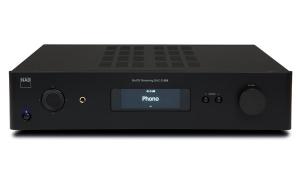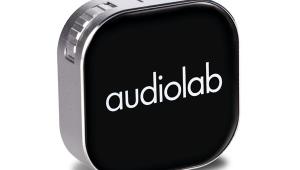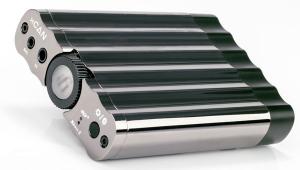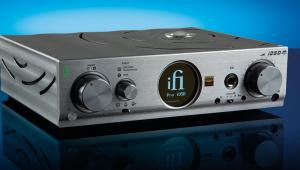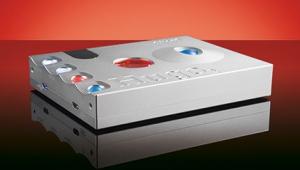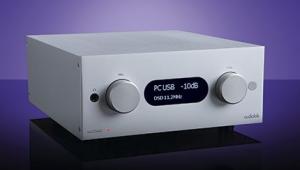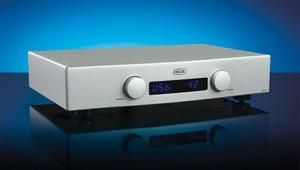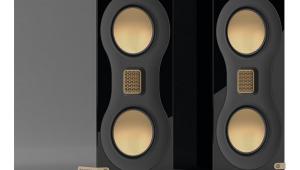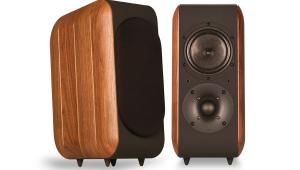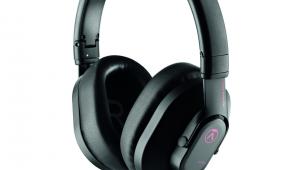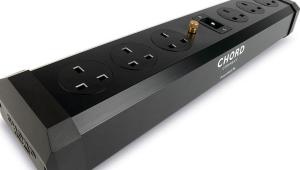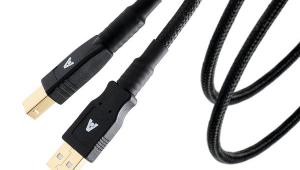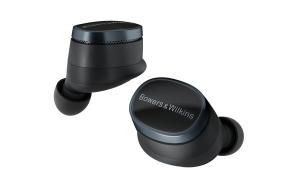iFi Audio xDSD
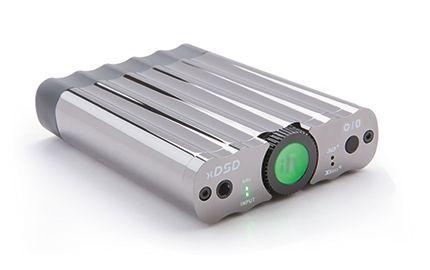
 It sometimes appears as though iFi Audio takes a rather scattershot approach to its product portfolio, with its nano and micro ranges offering almost a dozen portable DACs with similar designs and features. Every now and then, though, it comes up with a product that really stands out, such as the entry-level nano iDSD Black Label (HFC 433) that it launched at the end of 2017 for just £199. This year’s offering is the xDSD, which starts a new X-series of DACs, but it’s another impressive product with a £399 price tag that represents a challenge to the market-leading Chord Mojo (HFC 423).
It sometimes appears as though iFi Audio takes a rather scattershot approach to its product portfolio, with its nano and micro ranges offering almost a dozen portable DACs with similar designs and features. Every now and then, though, it comes up with a product that really stands out, such as the entry-level nano iDSD Black Label (HFC 433) that it launched at the end of 2017 for just £199. This year’s offering is the xDSD, which starts a new X-series of DACs, but it’s another impressive product with a £399 price tag that represents a challenge to the market-leading Chord Mojo (HFC 423).
The xDSD immediately stands out from other iFi Audio products, with a more streamlined design that is well suited to portable use. The ridged aluminium casing feels very sturdy, but is slimmer and lighter than its predecessors. The DAC is based on the same Burr-Brown DSD1793 processor as the nano iDSD Black Label, but includes a redesigned headphone amplifier, improved connectivity and a number of other features that set it apart from its less expensive stablemate.
The large power/volume dial on the front changes colour to indicate volume level and other settings and is flanked by two pairs of smaller LEDs that also change colour to indicate different options. There’s a single 3.5mm jack on the left, which acts as the main headphone output, but can also switch into fixed-level line-out mode for use with a set of desktop speakers or your hi-fi. On the right, you’ll find the settings button that is used to select the XBass+ and 3D+ filters and other input options.
As with the nano iDSD Black Label, the xDSD has a female USB-A port on the back that provides the main USB audio input, but the xDSD also includes a S/PDIF for optical or coaxial input. You’ll need an adaptor in order to connect Apple iOS devices or Android smartphones, but that’s the case with many rival DACs, including the aforementioned Mojo. However, a key difference from both the iDSD Black Label and the Chord DAC is the inclusion of aptX Bluetooth, which is useful when you’re travelling as it allows you to unplug your smartphone and switch to a wireless connection with fewer cables to carry around.
The features ensure that the xDSD provides excellent value for money, but it does have some idiosyncrasies. The different combinations of lights can take some time to decipher, and the skimpy manual isn’t as clear as it could be, leaving me randomly selecting buttons as I experiment with the Bluetooth and line-output options.
The xDSD also gives a choice of two different sets of firmware. The default option provides support for the MQA format on Tidal HiFi subscriptions and USB files up to 32-bit/384kHz PCM and DSD256, along with S/PDIF up to 24-bit/192kHz. If you don’t need MQA you can ‘downgrade’ to an earlier version of the firmware that omits MQA, but steps up the USB to 32-bit/768kHz and DSD512.
The new, slimline design also has one drawback worth noting, as it means that the battery is smaller and less powerful than its rivals. Battery life is quoted at 10 hours when using S/PDIF input, but Bluetooth drops to eight and USB input is just six hours.
Sound quality
I’m really quite taken by the gleaming, slimline design, and am pleased to find that there’s an attractive sparkle to its sound quality, too. The first thing I notice as I listen to the lossless ALAC files stored on my iPhone is the power on offer. My Master & Dynamic MW50+ headphone (HFC 438) reaches the maximum comfortable volume long before the volume dial starts to glow its ominous deep red warning. Yet there’s not a hint of distortion as Queen launch into the multi-tracked gospel chorus of Somebody To Love. The vast rondo in the middle section of the song is thrilling, catching all the detail in the different layers of vocals, and there’s a real zing to the sound as the alternate high/low vocals ricochet back and forth, while the rumbling drums and crisp hand-claps precisely set the pace. Even Mercury’s piano, which can often get lost in the dense wall of sound, stands out with a crisp, firm tone.
The xDSD can handle Queen in heavy-rock mode too, as Brian May’s power chords on The Millionaire Waltz – also on the Day At The Races album – strike like a sledge hammer. It’s a big, fat head-banging guitar sound, yet cleanly and precisely rendered by the xDSD. And, as the song reaches its absurd, overblown climax, the xDSD keeps its eye on all the details of the multi-tracked guitar fanfare, Mercury pounding away on the piano, and the whole vast concoction is topped off by the soaring Queen harmonies.
Going from one extreme to another, I turn to the almost-ambient sound of Snowflake by Kate Bush. The xDSD displayed a light touch with the excesses of Queen, and here it simply steps back and gives this most delicate of tracks room to breathe. The gentle flurry of piano notes float lightly through the air, capturing the sense of falling snow, yet are underpinned by the slow rumble of the drums that add an edge of urgency. The 3D+ filter offered by the xDSD also helps out here, slightly emphasising the left/right separation in order to open up the soundstage just a little more. That sense of a relaxed, open atmosphere is less pronounced when I switch my iPhone over to Bluetooth streaming, but the sound remains clear and detailed, and it’s nice to lose some of the clutter from my normal mobile music setup.
The xDSD can earn its keep indoors too, as its line-out option can be used to connect it to a larger set of speakers or even a car audio system. I’m also pleased that its MQA support allows me to listen to the Master streams from my Tidal account as I hook the xDSD up to my office computer and KEF EGG desktop speakers (HFC 410). The deep, grinding guitar and bass of Supermassive Black Hole by Muse rumbles around my office – there’s really no need for the XBass+ filter, although it’s handy if you like a bass-heavy sound – and the lightness and clarity of the xDSD comes into play once more, separating out the fuzzy bass effects and giving the guitar and percussion room to stand out as well. And then the xDSD really soars as the Black Holes And Revelations album reaches its finale in the Sergio Leone-inspired pomp-rock of Knights Of Cydonia. The charging-stallion rhythm of the drums is hard to resist, as the trumpets blare out and Muse do their best shrieking Queen impersonation. I’m even surprised by some light mariachi guitar strumming during the relative calm of the verses that I’d never noticed before.
Conclusion
The xDSD justifies its price on sound quality alone, delivering a variety of musical styles with admirable clarity and precision. Its slimline design is well suited to mobile use, especially with the inclusion of Bluetooth, helping to reduce clutter when on the move. It’s also a great option for use with a desktop setup, thanks to its digital inputs and line-out option (and MQA for Tidal fans). The only minor quibble is the battery life, which means that those on the road might prefer something that lasts longer. CJ
DETAILS
Product: iFi Audio xDSD
Price £399
Origin: UK/China
Type: Portable headphone amp/DAC
Weight: 127g
Dimensions (WxHxD): 67 x 19 x 95mm
FEATURES
● 32-bit/384kHz and DSD256-capable DAC
● Output: 1x 3.5mm headphone jack/line level
● Inputs: 1x USB-A; 1x S/PDIF (optical/coaxial); aptX Bluetooth
● Quoted battery life: up to 10 hours
Distributor: Select Audio
Telephone: 01900 601954
Website: ifi-audio.com
Read the full review in August issue 439
 |
Inside this month's issue:
Ruark R610 music system and Sabre-R standmount speakers, PMC twenty.23i Active, floorstanders, English Acoustics Downton preamplifier, Bluesound NODE ICON preamp/streamer, Ortofon Concorde Music Blue MM cartridge and much, much more
|

